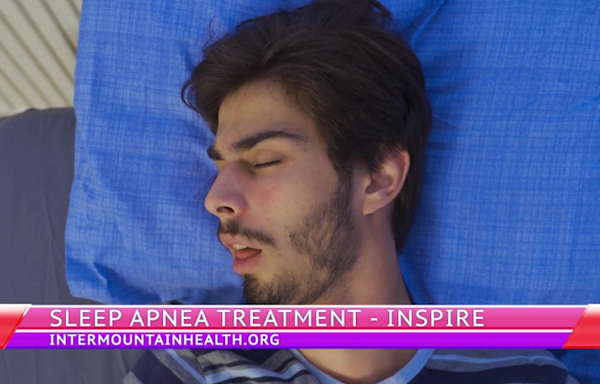Search results
News about sleep apnea, sulthiame, European epilepsy drug
News about Arizona, Shortness of breath, Lego
Also in the news
Jul 14, 2023 · Obstructive sleep apnea is the most common sleep-related breathing disorder. People with obstructive sleep apnea repeatedly stop and start breathing while they sleep. There are several types of sleep apnea.
Apr 6, 2023 · Obstructive sleep apnea. Obstructive sleep apnea occurs when the muscles that support the soft tissues in your throat, such as your tongue and soft palate, temporarily relax. When these muscles relax, your airway is narrowed or closed, and breathing is momentarily cut off.
Apr 16, 2024 · Obstructive sleep apnea (OSA) occurs when the upper airway becomes blocked, leading to brief pauses in breathing during sleep. Symptoms include tossing and turning during sleep, snoring, daytime fatigue, and headaches upon waking.
Nov 15, 2022 · Obstructive sleep apnea (OSA) is when a blockage in your airway keeps air from moving through your windpipe while you’re asleep. The blockage and lack of airflow can cause your blood oxygen levels to drop, triggering a survival reflex in your brain that wakes you up just enough to breathe again.
Mar 21, 2024 · Obstructive sleep apnea (OSA) is characterized by episodes of a complete airway collapse or a partial collapse with an associated decrease in oxygen saturation or arousal from sleep. Other symptoms include loud, disruptive snoring, witnessed apneas during sleep, and excessive daytime sleepiness.
Obstructive sleep apnea is a condition where sleep is interrupted by abnormal breathing. In sleep apnea, breathing is interrupted by the airway blocking the flow of air. These interruptions last for longer than 10 seconds and happen at least 5 times an hour throughout your sleep period.
Jul 14, 2023 · If you suspect that you have obstructive sleep apnea, you'll likely first see your primary doctor or other health care professional. You might be referred to a sleep specialist. Here's some information to help you get ready for your appointment.



